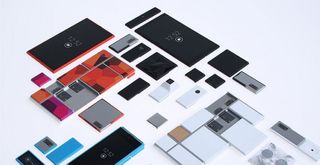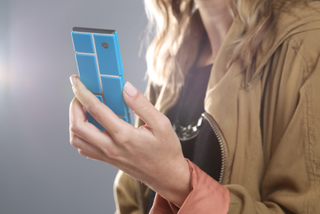Google's Project Ara: 7 Things You Need to Know

Google may have sold Motorola to Lenovo last month, but the Internet giant is holding on to one of the smartphone maker's most ambitious projects. Originally announced as a Motorola initiative in fall 2013, Project Ara is a modular smartphone concept that would allow users to swap out individual components or modules, such as the camera, CPU and display. Google hopes to have a commercial version of the product available by early 2015, so here's what you need to know about the company's plan for a single handset that evolves with your needs.
A Modular Smartphone Experience

Project Ara is designed to make upgrading your smartphone's guts as easy as putting together a LEGO set. (Think sleeker). Instead of having to splurge for a new handset if you want the fastest CPU, strongest battery or loudest speakers, the idea behind Ara would allow you to acquire those individual pieces and snap it onto your device. The platform has the potential to let developers and users get really creative, with multi-textured smartphone skins and multiple camera lenses on one side. If successful, Project Ara could be the Android of hardware, creating an open ecosystem in which developers can create their own unique modules for consumers.
MORE: iPhone 6 Rumors: Inside Apple's Next Big Thing
Project Led by DARPA Veterans
Motorola and Google may be parting ways, but the two giants are still collaborating for Ara--sort of. Google is holding on to Motorola's Advanced Technology and Projects (ATAP) group. ATAP is lead by Regina Dugan, who has plenty of experience crafting unique tech as the former director of the government's Defense Advanced Research Projects Agency (DARPA). Project Ara is being headed by ATAP's Paul Eremenko, another DARPA veteran who has shifted his efforts towards the modular project.
3D Printed Modules
3D Systems is bringing its renowned 3D printing tech to Project Ara, with a new high-speed printer in development that can manufacture individual modules in mass volumes. This new printer will be able to print 600-dpi color images, and users will be able to choose what type of material their modules are printed in. Eventually, 3D Systems might even be able to print electric smartphone components such as antennas.
How Big is the Phone?

While specific measurements haven't been released, the Ara platform will support mini, medium, and jumbo-sized phones. Mini phones will be very compact, medium devices will have a mainstream build in the vein of an iPhone or Galaxy, and jumbo phones will look and feel more like a phablet. The phone's size will be determined by its endoskeleton, which is the only Ara component that will be made by Google itself.
First Device Will Be $50, Not for Geeks
Despite its technical nature, the Ara website uses the tagline "Designed exclusively for 6 billion people." Google wants to get those folks who have never been online easy access to the Internet. In fact, the base $50 model will only have a Wi-Fi connection, not cellular. However, the bundled app will let you order additional modules.
Stay in the know with Laptop Mag
Get our in-depth reviews, helpful tips, great deals, and the biggest news stories delivered to your inbox.
MORE: 10 Best Android Apps You're Not Using
Over time, the easy swapability of Ara modules could appeal to mainstream shoppers who want a sharper camera without buying a new handset. There's also plenty to Ara to entice power users, as someone who wants the maximum amount of juice could drop that same camera for an extra battery. The project holds the potential to give handset users only the parts they want, which is a concept we've yet to see with today's mainstream devices.
Prototype as Soon as April, Shipping Early 2015
It might be a while before we see modular smartphones hit store shelves, but the development wheels behind Ara are already spinning fast. The ATAP team is hosting three developers' conferences this year, starting with one in California's Computer History Museum on Apr. 15 and 16. Module Developer's Kits could release by winter 2014, with the 100 most active devs to receive free Ara phones. Google's goal is to get the first Project Ara phone on shelves by the first quarter of next year, which could appear in convenience stores.
Shopping Experience Will Gauge Your Mood
According to Eremenko, a potential Ara phone shopping kiosk that can measure muscle movements, pupil dilation, and heart rate would aid users in configuring their Ara phones. For example, if the kiosk detected that a user was particularly stressed, it would be able to provide additional tips during the building process. Google might even rummage through your social posts to help you pick the right modules for your needs, though you would have to give it permission.

